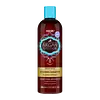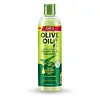What's inside
What's inside
 Benefits
Benefits

 Concerns
Concerns

 Ingredients Side-by-side
Ingredients Side-by-side

Water
Skin ConditioningSodium C14-16 Olefin Sulfonate
CleansingCocamide Mea
EmulsifyingSodium Chloride
MaskingCocamidopropyl Betaine
CleansingGlycerin
HumectantGlycol Distearate
EmollientParfum
MaskingArgania Spinosa Kernel Oil
EmollientGlycine Soja Protein
EmulsifyingHydrolyzed Keratin
HumectantHydrolyzed Corn Protein
Skin ConditioningHydrolyzed Soy Protein
HumectantPanthenol
Skin ConditioningCyclopentasiloxane
EmollientDimethiconol
EmollientPolyquaternium-10
PEG-150 Distearate
EmulsifyingDicaprylyl Ether
EmollientDecyl Glucoside
CleansingGlyceryl Oleate
EmollientPhenoxyethanol
PreservativeMethylchloroisothiazolinone
PreservativeMethylisothiazolinone
PreservativeCitric Acid
BufferingPolyquaternium-7
Magnesium Chloride
Potassium Sorbate
PreservativeBenzoic Acid
MaskingMagnesium Nitrate
Sodium Acetate
BufferingSodium Benzoate
MaskingLeuconostoc/Radish Root Ferment Filtrate
AntimicrobialSodium Hydroxide
BufferingBenzyl Benzoate
AntimicrobialLimonene
PerfumingWater, Sodium C14-16 Olefin Sulfonate, Cocamide Mea, Sodium Chloride, Cocamidopropyl Betaine, Glycerin, Glycol Distearate, Parfum, Argania Spinosa Kernel Oil, Glycine Soja Protein, Hydrolyzed Keratin, Hydrolyzed Corn Protein, Hydrolyzed Soy Protein, Panthenol, Cyclopentasiloxane, Dimethiconol, Polyquaternium-10, PEG-150 Distearate, Dicaprylyl Ether, Decyl Glucoside, Glyceryl Oleate, Phenoxyethanol, Methylchloroisothiazolinone, Methylisothiazolinone, Citric Acid, Polyquaternium-7, Magnesium Chloride, Potassium Sorbate, Benzoic Acid, Magnesium Nitrate, Sodium Acetate, Sodium Benzoate, Leuconostoc/Radish Root Ferment Filtrate, Sodium Hydroxide, Benzyl Benzoate, Limonene
Water
Skin ConditioningAmmonium Lauryl Sulfate
CleansingAmmonium Laureth Sulfate
CleansingDisodium Cocoamphodipropionate
CleansingCocamide Mea
EmulsifyingTrideceth-7 Carboxylic Acid
CleansingOlea Europaea Fruit Oil
MaskingAloe Barbadensis Leaf Juice
Skin ConditioningHydrolyzed Collagen
EmollientLecithin
EmollientSulfated Castor Oil
CleansingGlycerin
HumectantPropylene Glycol
HumectantLauryl Glucoside
CleansingSodium Laureth Sulfate
CleansingGlycol Distearate
EmollientLaureth-10
EmulsifyingPEG-12 Oleate
EmulsifyingCaprylic/Capric Triglyceride
MaskingPolyquaternium-7
Polyquaternium-10
PPG-5-Ceteth-10 Phosphate
EmulsifyingCetrimonium Chloride
AntimicrobialSilicone Quaternium-2 Panthenol Succinate
Cetyl Triethylmonium Dimethicone PEG-8 Succinate
Coco-Glucoside
CleansingGlyceryl Oleate
EmollientDisodium EDTA
Citric Acid
BufferingDMDM Hydantoin
PreservativeMethylchloroisothiazolinone
PreservativeMethylisothiazolinone
PreservativeParfum
MaskingButylphenyl Methylpropional
PerfumingHexyl Cinnamal
PerfumingCI 42053
Cosmetic ColorantCI 19140
Cosmetic ColorantWater, Ammonium Lauryl Sulfate, Ammonium Laureth Sulfate, Disodium Cocoamphodipropionate, Cocamide Mea, Trideceth-7 Carboxylic Acid, Olea Europaea Fruit Oil, Aloe Barbadensis Leaf Juice, Hydrolyzed Collagen, Lecithin, Sulfated Castor Oil, Glycerin, Propylene Glycol, Lauryl Glucoside, Sodium Laureth Sulfate, Glycol Distearate, Laureth-10, PEG-12 Oleate, Caprylic/Capric Triglyceride, Polyquaternium-7, Polyquaternium-10, PPG-5-Ceteth-10 Phosphate, Cetrimonium Chloride, Silicone Quaternium-2 Panthenol Succinate, Cetyl Triethylmonium Dimethicone PEG-8 Succinate, Coco-Glucoside, Glyceryl Oleate, Disodium EDTA, Citric Acid, DMDM Hydantoin, Methylchloroisothiazolinone, Methylisothiazolinone, Parfum, Butylphenyl Methylpropional, Hexyl Cinnamal, CI 42053, CI 19140
 Reviews
Reviews

Ingredients Explained
These ingredients are found in both products.
Ingredients higher up in an ingredient list are typically present in a larger amount.
Citric Acid is an alpha hydroxy acid (AHA) naturally found in citrus fruits like oranges, lemons, and limes.
Like other AHAs, citric acid can exfoliate skin by breaking down the bonds that hold dead skin cells together. This helps reveal smoother and brighter skin underneath.
However, this exfoliating effect only happens at high concentrations (20%) which can be hard to find in cosmetic products.
Due to this, citric acid is usually included in small amounts as a pH adjuster. This helps keep products slightly more acidic and compatible with skin's natural pH.
In skincare formulas, citric acid can:
While it can provide some skin benefits, research shows lactic acid and glycolic acid are generally more effective and less irritating exfoliants.
Most citric acid used in skincare today is made by fermenting sugars (usually from molasses). This synthetic version is identical to the natural citrus form but easier to stabilize and use in formulations.
Read more about some other popular AHA's here:
Learn more about Citric AcidWe don't have a description for Cocamide Mea yet.
Glycerin is already naturally found in your skin. It helps moisturize and protect your skin.
A study from 2016 found glycerin to be more effective as a humectant than AHAs and hyaluronic acid.
As a humectant, it helps the skin stay hydrated by pulling moisture to your skin. The low molecular weight of glycerin allows it to pull moisture into the deeper layers of your skin.
Hydrated skin improves your skin barrier; Your skin barrier helps protect against irritants and bacteria.
Glycerin has also been found to have antimicrobial and antiviral properties. Due to these properties, glycerin is often used in wound and burn treatments.
In cosmetics, glycerin is usually derived from plants such as soybean or palm. However, it can also be sourced from animals, such as tallow or animal fat.
This ingredient is organic, colorless, odorless, and non-toxic.
Glycerin is the name for this ingredient in American English. British English uses Glycerol/Glycerine.
Learn more about GlycerinGlyceryl Oleate is the ester of glycerin and oleic acid. This ingredient is mainly an emollient and emulsifier.
Emollients soften and hydrate the skin by creating a thin film on top to trap in moisture. As an emulsifier, glyceryl oleate helps stabilize formulations by preventing ingredients such as oil and water from separating. According to a manufacturer, this ingredient helps helps thicken water-in-oil formulations, shower gels, and hair shampoos.
In some products, this ingredient may be used as a fragrance / perfuming ingredient. The scent of this ingredient is described to be "waxy".
Glyceryl oleate is created from oils rich in oleic acid, such as peanut oil and olive oil.
This ingredient may not be malassezia folliculitis safe.
Learn more about Glyceryl OleateGlycol Distearate serves as a pearlizing or opacifying agent in cosmetic products.
It's often included in cleansers and haircare products to give them a lustrous or shimmering appearance.
It is derived from stearic acid, a natural fatty acid commonly found in vegetable oils and animal fats.
Glycol Distearate isn't fungal acne safe.
Learn more about Glycol DistearateMCI is a preservative and known skin-irritant. It has anti-bacteria anti-fungal properties.
Studies spanning several decades have shown this ingredient to cause skin irritation and allergies.
MCI is commonly combined with methylisothiazolinone (MI). Other names for this mixture include Kathon CG and Euxyl K 100.
The use of this ingredient varies around the world:
Learn more about MethylchloroisothiazolinoneMI is a preservative and known skin irritant. In the past, MI was used for its ability to prevent bacteria, yeast, and fungi growth in low doses.
Nowadays, you'll most likely see MI combined with Methylchloroisothiazolinone (MCI). Trade names for this combination include Kathon CG or Euxyl K 100.
Since then, numerous studies have shown this ingredient to cause contact dermatitis, or skin irritation.
The use of this ingredient varies around the world:
Learn more about MethylisothiazolinoneParfum is a catch-all term for an ingredient or more that is used to give a scent to products.
Also called "fragrance", this ingredient can be a blend of hundreds of chemicals or plant oils. This means every product with "fragrance" or "parfum" in the ingredients list is a different mixture.
For instance, Habanolide is a proprietary trade name for a specific aroma chemical. When used as a fragrance ingredient in cosmetics, most aroma chemicals fall under the broad labeling category of “FRAGRANCE” or “PARFUM” according to EU and US regulations.
The term 'parfum' or 'fragrance' is not regulated in many countries. In many cases, it is up to the brand to define this term.
For instance, many brands choose to label themselves as "fragrance-free" because they are not using synthetic fragrances. However, their products may still contain ingredients such as essential oils that are considered a fragrance by INCI standards.
One example is Calendula flower extract. Calendula is an essential oil that still imparts a scent or 'fragrance'.
Depending on the blend, the ingredients in the mixture can cause allergies and sensitivities on the skin. Some ingredients that are known EU allergens include linalool and citronellol.
Parfum can also be used to mask or cover an unpleasant scent.
The bottom line is: not all fragrances/parfum/ingredients are created equally. If you are worried about fragrances, we recommend taking a closer look at an ingredient. And of course, we always recommend speaking with a professional.
Learn more about ParfumPolyquaternium-10 is an ammonium salt of hydroxyethylcellulose. It is a white and granular powder used as a film-former and anti-static agent.
This ingredient is commonly found in hair conditioning products. According to a manufacturer, its positive charge makes it great for absorbing hair proteins. The manufacturer also states this ingredient helps with curl retention.
For haircare friends: this ingredient is not a silicone.
Learn more about Polyquaternium-10Polyquaternium-7 is a light to clear colored liquid. It is commonly found in haircare products for its film-forming and anti-static properties.
According to a manufacturer, it is a non-paraben and specially developed for negatively charged surfactant systems. This makes it a great hairstyle holder and helps to improve wet hair detangling without adding buildup.
Water. It's the most common cosmetic ingredient of all. You'll usually see it at the top of ingredient lists, meaning that it makes up the largest part of the product.
So why is it so popular? Water most often acts as a solvent - this means that it helps dissolve other ingredients into the formulation.
You'll also recognize water as that liquid we all need to stay alive. If you see this, drink a glass of water. Stay hydrated!
Learn more about Water